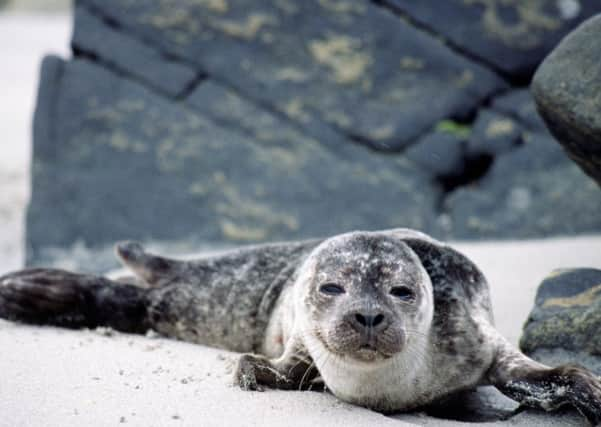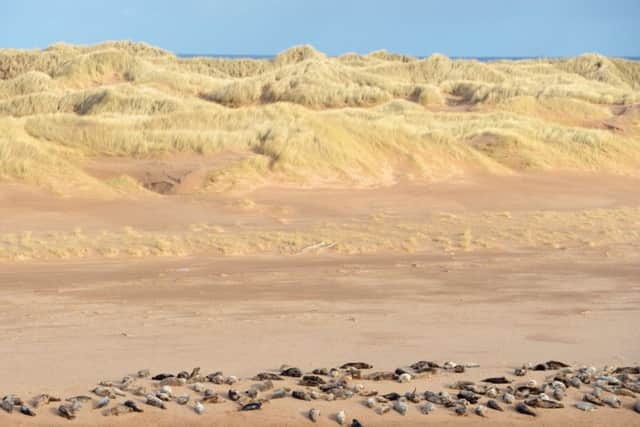Public warned over seal worrying on Scottish beaches


Conservationists and government nature experts are becoming increasingly worried about an increase in the number of incidents where distressed seals are fleeing from their important resting areas to escape people and pets.
In some places up to 2,000 panicked seals have been seen bolting into the sea in a single incident.
Advertisement
Hide AdAdvertisement
Hide AdAs many as 20 such stampedes have been happening on the busiest days at a popular beach in Aberdeenshire that is a designated haven for grey seals.


Scottish Natural Heritage (SNH) is calling for the public to respect the animals and avoid putting them under undue stress, which can interfere with feeding and cause mothers to abandon their pups.
The mouth of the River Ythan, at Forvie national nature reserve, is a protected ‘haul-out’ site for grey seals to rest and breed.
In Scotland it is an offence to intentionally or recklessly harass seals in such areas and signs have been erected at the Forvie to warn people.
Observing them from the south side of the estuary at Newburgh beach is permitted.
However, problems arise when visitors – some with dogs – venture onto the same side of the shore as the seals.
The issue is discussed in the latest episode of the BBC show Landward.
Lee Watson, founder of the Ythan Seal Watch group, said: “Before we started raising awareness through the Seal Watch page, we were filming anything from 10 to 20 disturbances a day at the weekend.
Advertisement
Hide AdAdvertisement
Hide Ad“As soon as dogs are there the seals become agitated and then that’s the start of the stampede.”
He said disturbance can cause “serious problems” for seals, especially during important times in their life cycle.
He added: “Seals are warm blooded mammals so they can spend two or three days out on a beach and then when they’re disturbed into the cold water they can suffer shock.
“If the seals are moulting it can also delay the moulting process. So it means they can take longer to moult and can become overburdened with already existing parasites, they can become ill and they need to be picked up and rescued.”
If watching seals, SNH advises people to give them space and retreat if there are any signs of distress such as the animals moving towards the sea.
They are also warned not to encircle seals, get between them and the water or separate pups from their mothers.
Gavin Clark, SNH operations manager for Tayside and Grampian, said: “We want to welcome visitors to Forvie and help them to enjoy the nature reserve and the wildlife that is protected here, but seals need time to rest in order to conserve energy.
“Disturbance will result in increased stress and a stampede could cause injury.
Advertisement
Hide AdAdvertisement
Hide Ad“If you’re visiting Forvie and come across the seals on the beach, our advice is to heed the signs and stay well back.
“When watching seals on the beach, be quiet, avoid sudden movements and be responsive to their behaviour. If a few seals raise their heads, then it’s a sign you are too close and they are becoming nervous.
“For the best view without the risk of disturbance, we would recommend watching the seals from Newburgh beach on the south side of the estuary.”
He warned that incidents of harassment at a designated seal haul-out could be a wildlife crime and should be reported to the police.
To date nobody has been prosecuted for disturbing seals at Newburgh since the area became a protected site in 2017, despite a number of recorded incidents.
Last August dog walkers caused an estimated 1,000 seals to flee into the water and remain away from their haul-out spot for a considerable length of time.
Police were called but decided no crime had been committed.